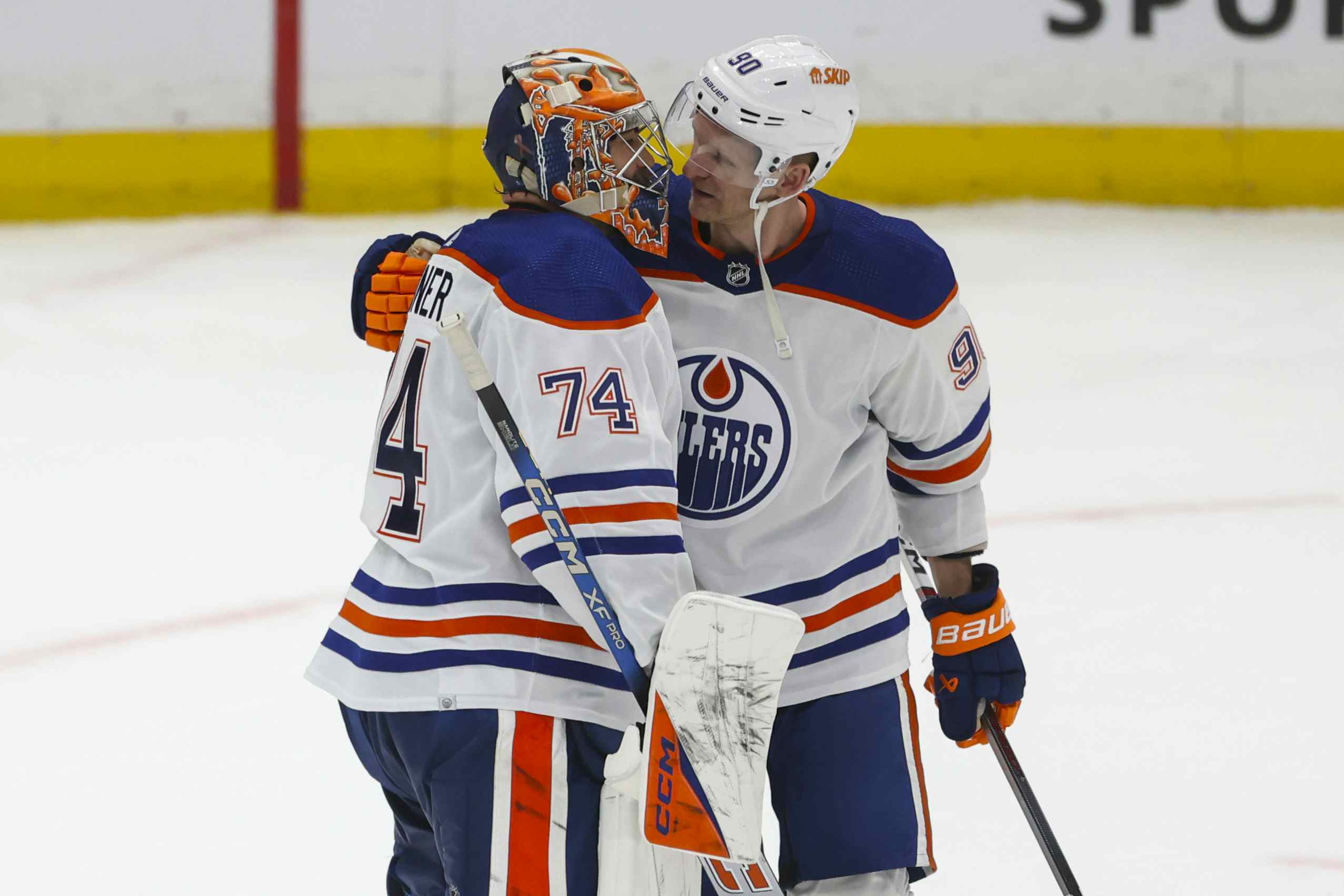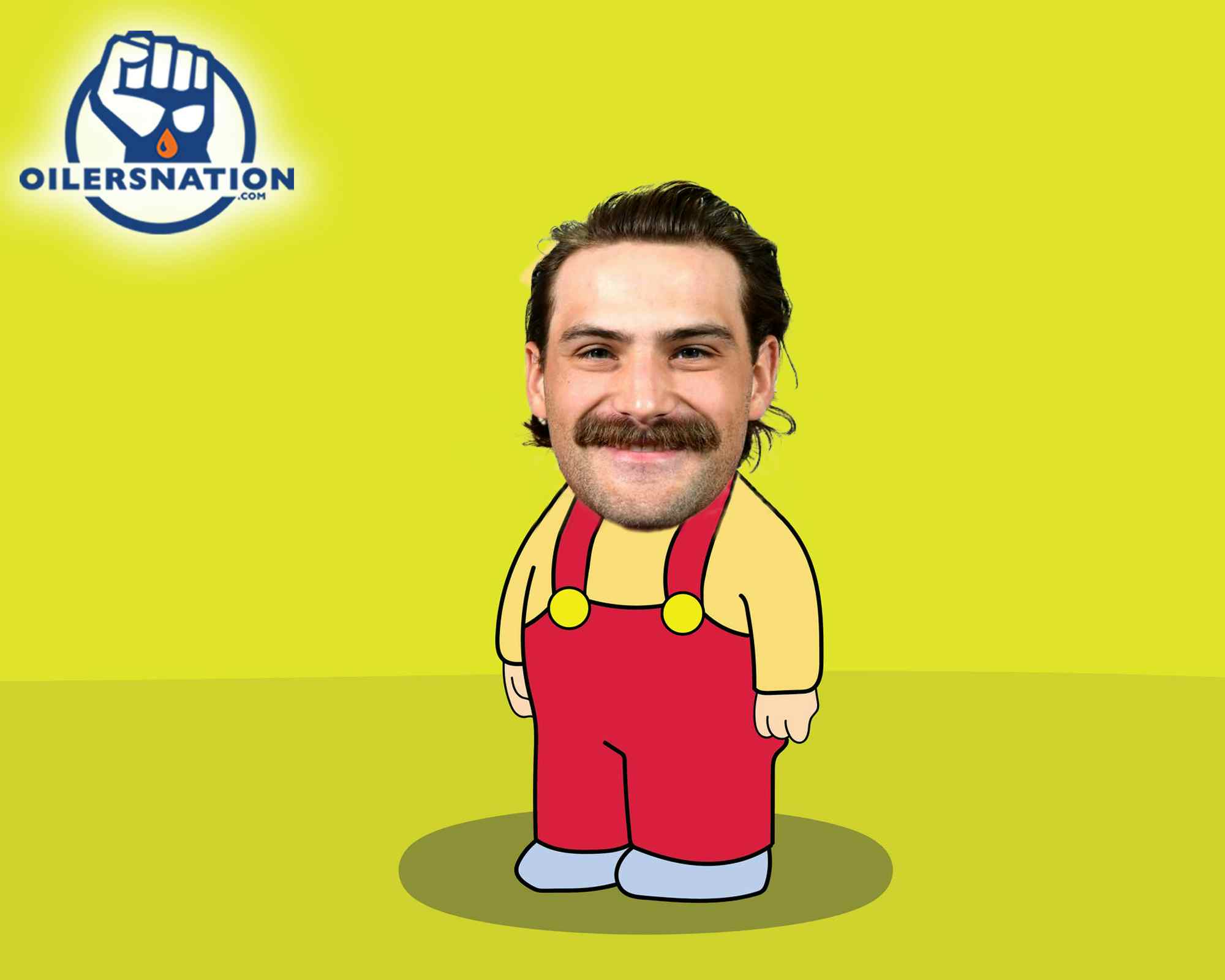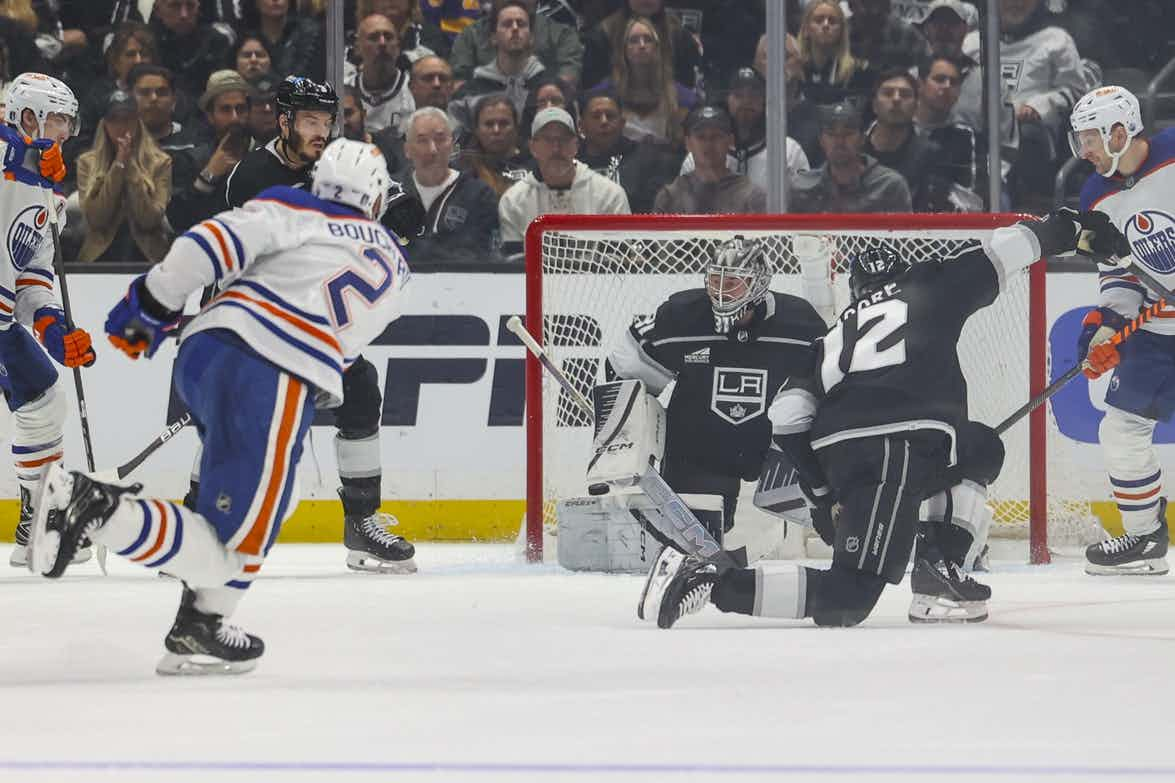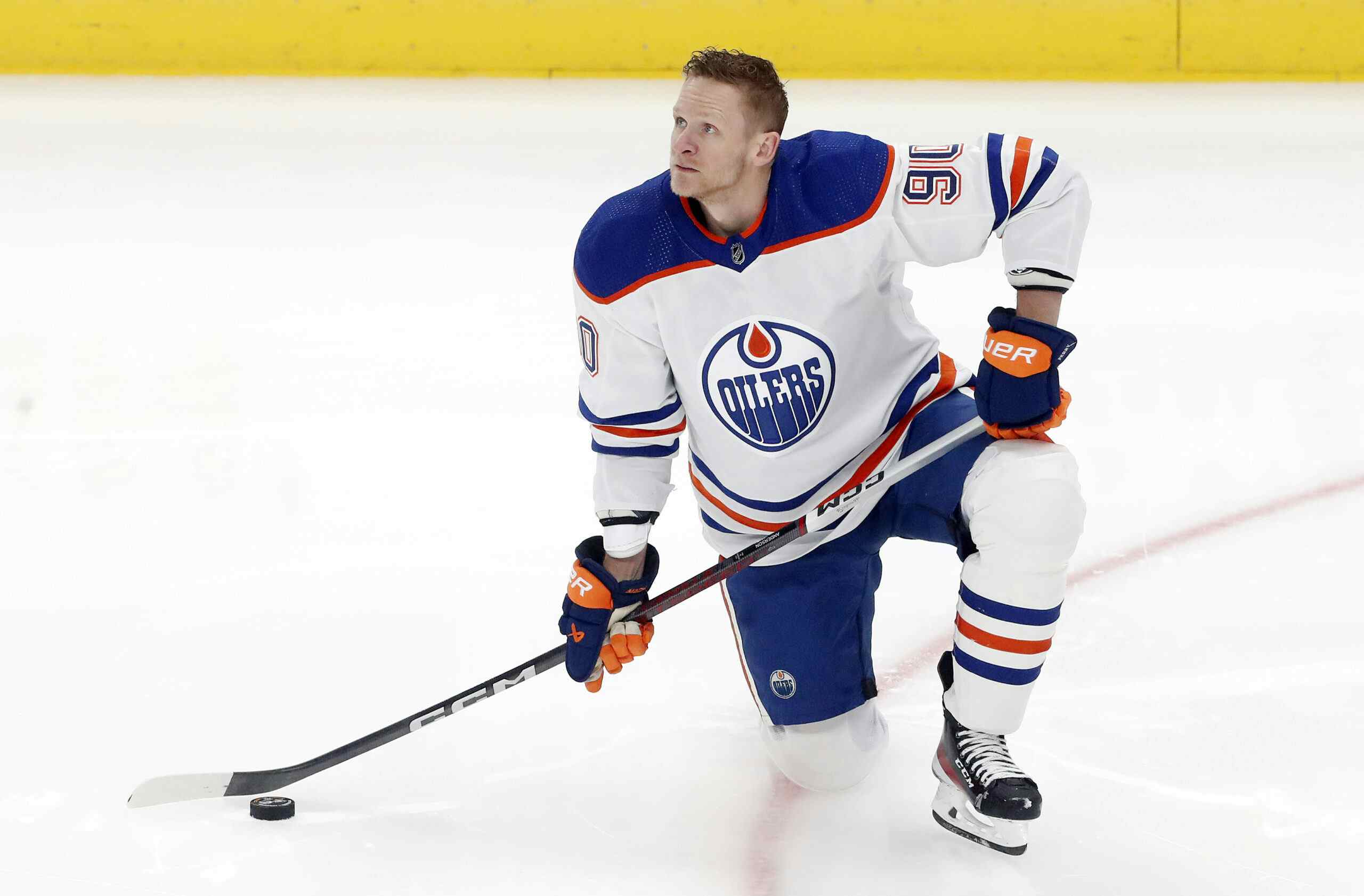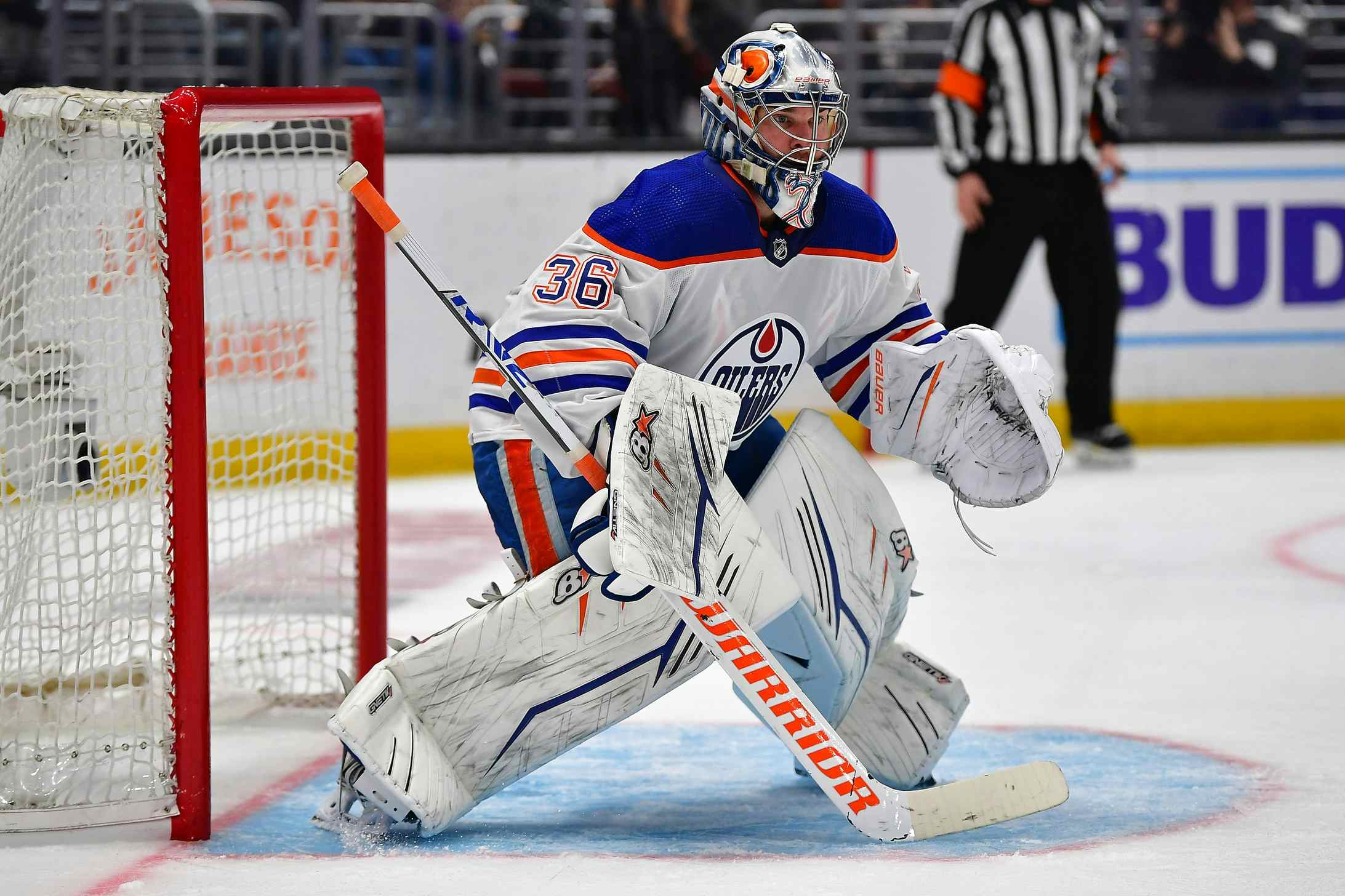Todd Nelson’s Edmonton Oilers

The Edmonton Oilers are now 9-9-2 under Todd Nelson, and they’ve carved that record out on merit. They’ve done it without David Perron (18 games), Taylor Hall (eight games) and Benoit Pouliot (seven games) for long stretches.
How is this happening?
All Situations

- All-situations, score-adjusted Corsi under Dallas Eakins: 50.2%
- All-situations, score-adjusted Corsi under Todd Nelson: 49.8%
(Note: I’ve nixed the five games the Oilers played under Nelson/general manager Craig MacTavish because I don’t for a moment believe that the interim coach of record was calling the shots while his direct superior, a career coach, listened meekly on the bench beside him. Mileage may vary, but to me it does not seem reasonable to ascribe those five games to Nelson.)
Those numbers are open to all sorts of different interpretations, but I see them as an endorsement of the Oilers’ interim head coach. Eakins doesn’t get a lot of credit for the fairly substantial improvement in Edmonton’s underlying numbers this season because the team didn’t win under his watch, but that improvement was vital; no team has sustainable success if its pinned in its own end of the rink for most of the night. Whether the Oilers’ brutal shooting/save percentage was Eakins fault or not is debatable and continues to be debated. All I’ll say is that I’ve seen some really good coaches (Mike Babcock in Detroit, Darryl Sutter in L.A.) go long stretches with great Corsi numbers and garbage percentages so it can happen to even the best. That’s not the purpose of this piece, though. We’ll get a definitive answer on Eakins at his next coaching stop.
For now those numbers are included as a baseline for the purpose of examining what Nelson has done. With inferior personnel, his team is basically a rounding error away in terms of Corsi (in all situations, and adjusting for score), and of course the team’s record is a lot better.
There’s been a lot of talk of intangibles, and from spending 2013-14 in Oklahoma City I can understand why; I know the atmosphere that Nelson endeavours to create and I know the amount of respect his players have for him. When we see an improved record and couple it with those things it’s easy to say that the changes Nelson has wrought are intangible and can’t be tracked by the numbers. Maybe that’s true, but I haven’t really seen anyone try, so let’s try now.
Even Strength

- Even-strength goal differential under Dallas Eakins: +47/-75 (-0.90 per game)
- Even-strength goal differential under Todd Nelson: +32/-45 (-0.65 per game)
Under Eakins’ watch, the Oilers had a 50.9% Corsi, a 6.5 shooting percentage and a 0.902 save percentage at five-on-five (goal differential above is both five-on-five and four-on-four). Under Nelson’s watch, the Corsi is 46.9%, the shooting percentage 7.4 percent and the save percentage 0.909. We should note that Nelson has had inferior personnel, and the Corsi numbers get quite a bit closer when we adjust for the fact that Eakins’ Oilers were trailing more than Nelson’s Oilers.
We’ve seen a reasonably big shooting percentage bump at five-on-five. There’s a tendency to say that Nelson’s systems are so much better that it’s seen the Oilers score on a higher percentage of their chances. Before we endorse that point of view, let’s try one thing:
- Oilers five-on-five shooting percentage, minus Eberle, under Eakins: 42 goals, 648 shots, 6.5 percent
- Oilers five-on-five shooting percentage, minus Eberle, under Nelson: 23 goals, 381 shots, 6.0 percent
Huh.
Jordan Eberle has scored eight times on 38 even-strength shots under Nelson; he scored four times on 57 shots under Eakins. Remove him from the equation, and suddenly the Oilers under Nelson are the same wretched shooting percentage team they were under Eakins (actually, a little worse).
When the gap is so small that we can reduce it to one player, I’m not inclined to say that there’s a massive team change. There’s a massive Eberle change, for sure, but if we take his goals out of the equation the Oilers actually had a slightly better even-strength goal differential under Eakins than under Nelson. Add to that the wretched save percentage under both coaches and I think it’s fair to say that coaching probably isn’t driving the shooting/save percentage results at evens.
I’ve noted previously that Nelson has inferior personnel and has played with the lead more often; that’s true. On balance I’m inclined to say that at even-strength on the whole the majority of the team has taken a small step back, perhaps owing to coaching and perhaps owing to personnel. It’s been compensated for because Eberle has been three times as likely to score on any given shot under Nelson than he was under Eakins. Maybe that’s coaching, maybe that’s injury, maybe it’s personal circumstance; we really don’t know.
What we can say is that, based on goal differential, the Oilers at evens were a bad team both under Eakins and under Nelson because their shooting percentage and save percentage are terrible.
Special Teams

- Special teams goal differential under Dallas Eakins: +14/-23 (-0.29 per game)
- Special teams goal differential under Todd Nelson: +12/-10 (+0.10 per game)
What we have seen under Nelson is massive improvements on both special teams, both in terms of goal differential and underlying numbers.
On the power play, the Oilers averaged 97.1 shot attempts/hour under Eakins; that ranked them 18th in the NHL over that span. Under Nelson, the Oilers have averaged an incredible 111.6 shot attempts/hour, the fourth best number in the NHL over that span. Nelson’s power play is +10/-0 in terms of goal differential over 20 games; Eakins was +12/-5 over 31. The improvement is real, and it’s spectacular.
Ditto for the penalty kill. Under Eakins, the Oilers penalty kill allowed 98.0 shot attempts/hour, ranking them 15th in the NHL over that span. Under Nelson, the penalty kill has allowed 86.5 shot attempts/hour, the third-best number in the entire league.
We don’t need to parse these numbers. Almost overnight, Edmonton has improved on both special teams to a massive degree. Personally, I credit that to coaching, but because it’s confined to special teams I’m tempted to say that if we dig into it we’ll find tactical changes that mattered. That’s something we’ll do in the coming weeks; this piece is long enough as it is.
In Total

When we actually start digging, we don’t have to just shrug our shoulders and say that Nelson has the team buying in, that he hasn’t alienated the young players, that Eakins lost the room and he’s won it back.
When we actually start digging, we see that the Oilers (minus Eberle) are actually a somewhat lesser team under the new coach at even-strength, but that between Eberle’s improvement and massive changes on special teams they’re a better team overall.
If I were general manager Craig MacTavish and I was forced to make decisions today, I’d do the following:
- Take the interim tag off Todd Nelson. He’s made big upgrades at special teams and at even-strength he’s had incredible challenges which go a long way toward explaining the step back in the team’s underlying numbers.
- Upgrade personnel. Goaltending has been a problem, the blue line has been a problem and shooting percentage has been a problem. Those problems have not gone away under Nelson at evens; under two coaches this team has underperformed percentage-wise and *just maybe* it’s because of the obvious massive holes on the blue line and at centre. Fix the roster. Don’t blame the coach.
All advanced statistics taken from the wonderful war-on-ice.com, with my profound thanks.
RECENTLY BY JONATHAN WILLIS
- WWYDW: One to three new bodies
- GDB 55.0: Hall out six weeks
- Craig MacTavish’s defensive blueprint for 2015-16
- Martin Marincin recalled
- One last thing
- Objectivity and coverage of the Edmonton Oilers
- Anton Lander, back from the dead?
- The moment of opportunity to trade Jordan Eberle has passed
- Follow Jonathan Willis on Twitter
Recent articles from Jonathan Willis

